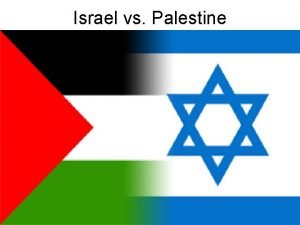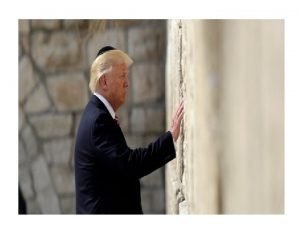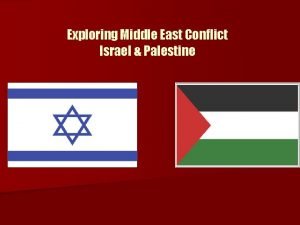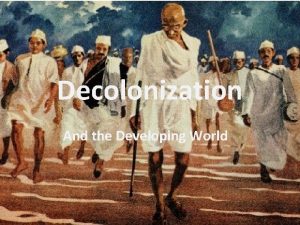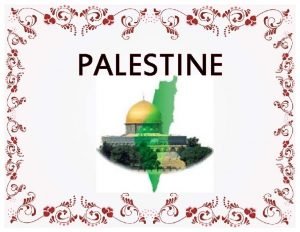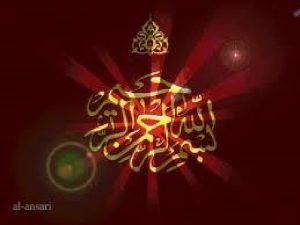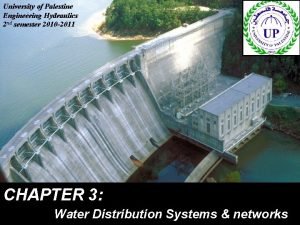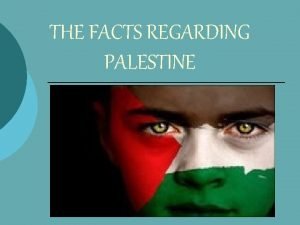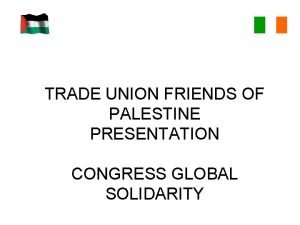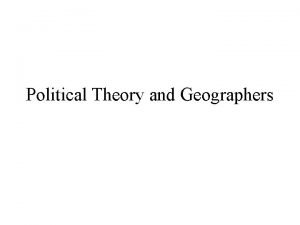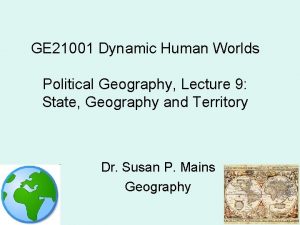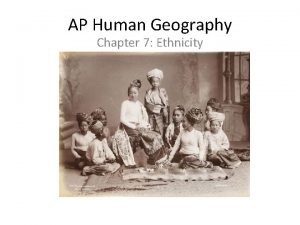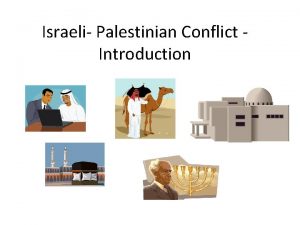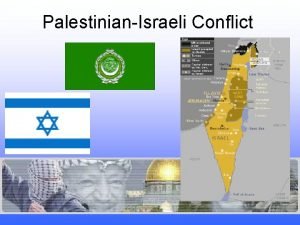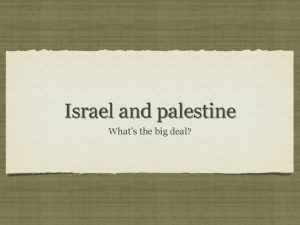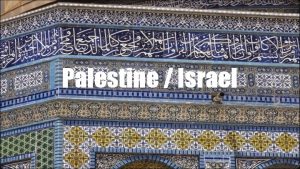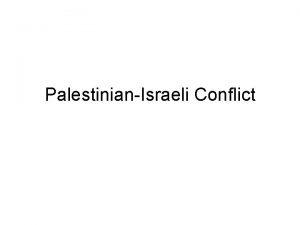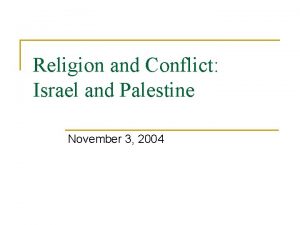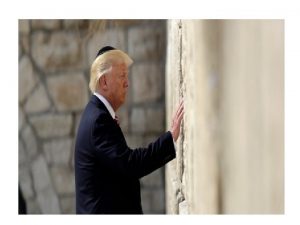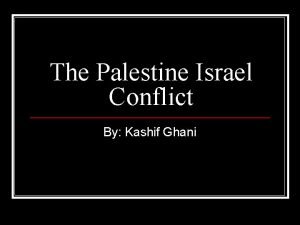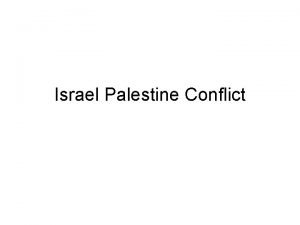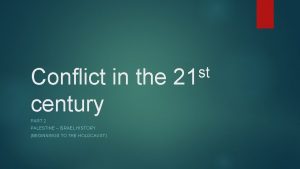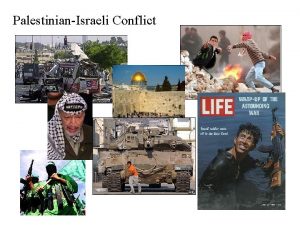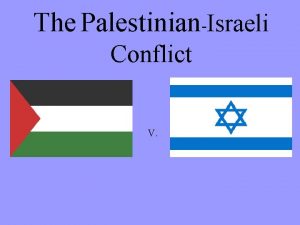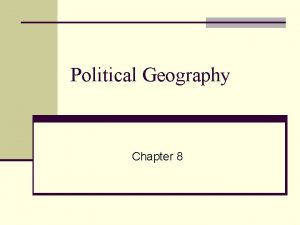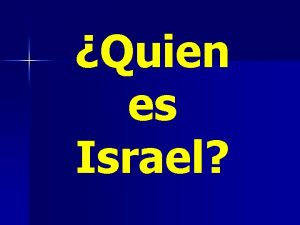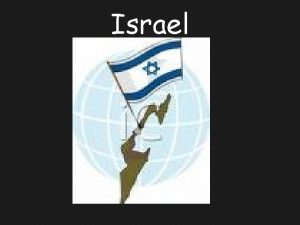Political Geography Conflict Israel Palestine PalestinianIsraeli Conflict Introduction



























- Slides: 27

Political Geography Conflict Israel & Palestine

Palestinian-Israeli Conflict: Introduction The conflict between Israel and the Palestinians is one that is: �Extremely dangerous �Long-lasting �Complicated �Both political and religious

US Interests: Why should we care? �This conflict is destabilizing and could lead to a major world war. Many wars have already been fought. �Israel possesses nuclear weapons and its enemies would like to develop such weapons to gain a military advantage. �America has oil interests in the region. �Promote Democracy: Israel is a democratic, capitalistic state. �US citizens have close ties to Israel and Arabs.

The Geography Israel is at the crossroads between Asia, Africa, and Europe. Today, it is in the heart of the Arab Middle East. The area’s small size limits capacity to be a homeland for all the people who want to live there.

Israel: Land for Jews � Israel is a modern, democratic nation created in 1948. � It was conceived as a homeland for Jews who had experienced discrimination worldwide. � Israel was the historic homeland of the Jews first promised by God to Abraham around 2000 BCE. � Israel was the site of several kingdoms and independent states until the Romans finally exiled the Jews in 135 AD. � During the Diaspora, Jews remembered their homeland dreamed of returning to it.

Israel: The Western Wall � Jerusalem is the site of the holiest site in Judaism, remains of the earliest Temples. � “The Western Wall is part of the retaining wall supporting the temple mount built by Herod in 20 B. C. After the destruction of the Second Temple in 70 A. D. , Jews were not allowed to come to Jerusalem until the Byzantine period, when they could visit once a year on the anniversary of the destruction of the Temple and weep over the ruins of the Holy Temple. Because of this, the wall became known as the ‘Wailing Wall. ’”

Palestine: Homeland for Palestinians are the Arabic speaking people that live in Palestine. Most Palestinians practice Islam which came to Palestine around 638 AD, although some are Christian. Jerusalem is one of the most holy cities for Islam because Muslims believe that Muhammad ascended to heaven here.

The Holy Land for Christians �Israel and Palestine has been a major site for Christian pilgrimages and Crusades. �Christians believe Jesus was been born in Bethlehem and raised in Nazareth. �Christians believe he was crucified and resurrected in Jerusalem.



from Jordan from Egypt from Syria

Geopolitical Issues in Israel �Temple Mount �Jerusalem �Water Resources �Right of Return �Arab refugees displaced 1947 -48 �Israeli settlements in West Bank and Gaza �Palestinian statehood?

Old City – Jerusalem

Key water issues: • Mediterranean Sea • Dead Sea • Sea of Galilee • Jordan River • Red Sea

Should refugees be able to return?

Can a Palestinian State be created?

West Bank Barrier - Structure


Israeli Security Border

Gaza War – Summer 2014

Gaza War – Summer 2014

UN Convention on the International Law of the Sea Zone Territorial Sea Contiguous Zone Exclusive Economic Zone High Seas Distance from Coast Provisions of Convention 12 nm (19 km) sovereignty, including exclusive fishing rights; vessels have the right of innocent passage, though military and research vessels can be challenged Up to 24 nm (38 km) coastal states can enforce customs, immigration, sanitation laws and have the right of hot pursuit out of its territorial waters Up to 200 nm (370 km); or the continental shelf to 350 nm (560 km) rights to explore, exploit, conserve, and manage the natural resources of the seabed and waters; traditional freedoms of the high seas are to be maintained beyond EEZ freedoms include the right to sail ships, fish, fly over, lay submarine cables and pipelines; mineral resources are declared the common heritage of humankind to be managed for the benefit of all the peoples of the earth



More Conflicts: Kashmir

More conflicts: Tibet

More Conflicts: Northern Ireland
 Israel palestine conflict
Israel palestine conflict Israel palestine
Israel palestine How many countries recognize palestine
How many countries recognize palestine Palestine map 2020
Palestine map 2020 Middle east war
Middle east war Ap human geography political geography frq
Ap human geography political geography frq Stateless nation
Stateless nation Palestine 1967 borders
Palestine 1967 borders Palestine flag meaning
Palestine flag meaning English for palestine teacher's book
English for palestine teacher's book Vaccination schedule in palestine
Vaccination schedule in palestine Palestine hydraulics
Palestine hydraulics Palestine
Palestine Palestine
Palestine Golda meir on palestine
Golda meir on palestine Who is this woman
Who is this woman Daad scholarship palestine
Daad scholarship palestine Genetic boundary definition
Genetic boundary definition Objective of political geography
Objective of political geography Political geography of australia
Political geography of australia Relationship between political science and geography
Relationship between political science and geography Political map definition geography
Political map definition geography Political geography
Political geography Compare geometric boundaries and antecedent boundaries.
Compare geometric boundaries and antecedent boundaries. Political geography
Political geography Difference between centrifugal and centripetal force
Difference between centrifugal and centripetal force 5 themes of geography ap human geography
5 themes of geography ap human geography Blockbusting ap human geography definition
Blockbusting ap human geography definition
